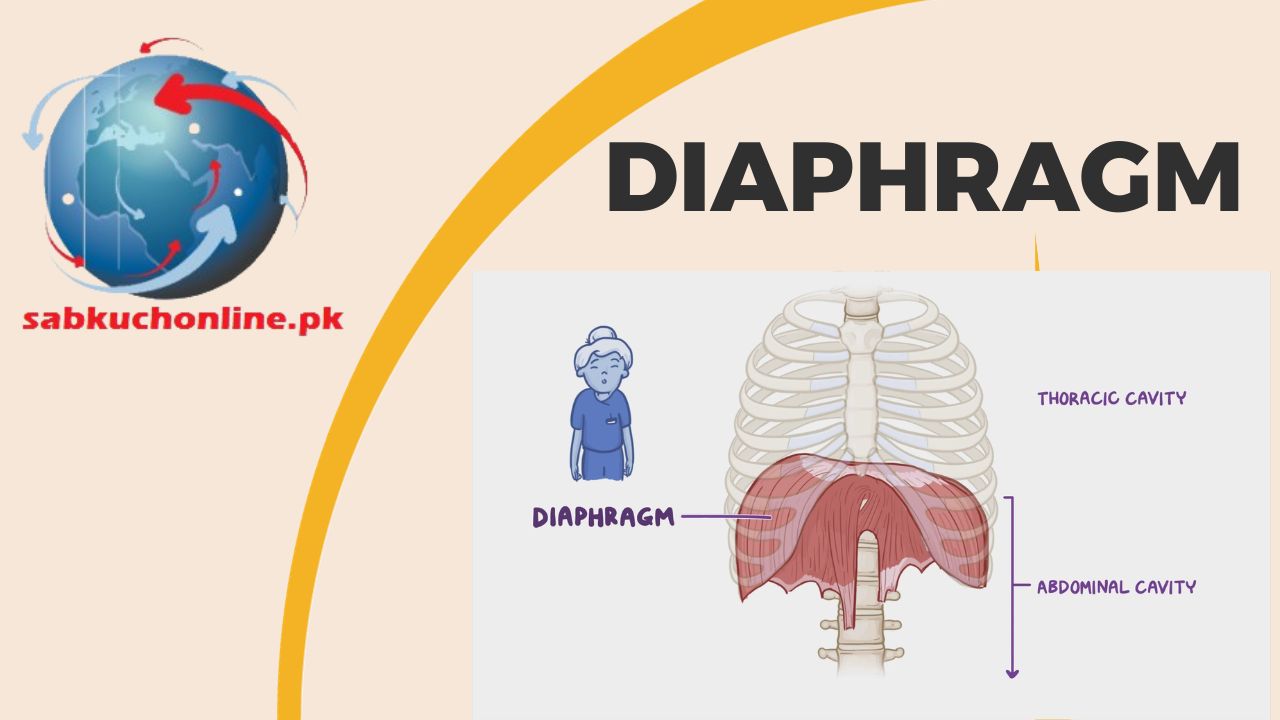The diaphragm is a large, dome-shaped muscle that plays a crucial role in respiration by separating the thoracic and abdominal cavities. It is the primary muscle of inspiration, contracting and relaxing to facilitate the movement of air in and out of the lungs. Here are key features and functions of the diaphragm:
Anatomy of the Diaphragm:
- Dome-Shaped Structure:
- The diaphragm is a musculotendinous partition that separates the thoracic cavity above from the abdominal cavity below.
- Muscular and Tendinous Components:
- The diaphragm consists of a central muscular portion and a peripheral tendinous portion.
- The muscular portion is composed of skeletal muscle fibers.
- Central Tendon:
- The central tendon is a thin, aponeurotic membrane at the center of the diaphragm.
- It lacks muscle fibers and serves as a point of attachment for the muscle fibers originating from the diaphragm’s muscular rim.
- Muscular Rim:
- The muscular rim forms the outer circumference of the diaphragm.
- It attaches to the lower ribs, sternum, and lumbar vertebrae.
- Openings and Apertures:
- There are several openings in the diaphragm for the passage of structures between the thoracic and abdominal cavities:
- Aortic hiatus: Allows the passage of the aorta.
- Esophageal hiatus: Allows the passage of the esophagus.
- Caval opening: Allows the passage of the inferior vena cava.
- There are several openings in the diaphragm for the passage of structures between the thoracic and abdominal cavities:
Functions of the Diaphragm:
- Primary Muscle of Respiration:
- The diaphragm is the main muscle responsible for breathing or respiration.
- During inhalation (inspiration), the diaphragm contracts, moving downward and increasing the volume of the thoracic cavity.
- This decrease in thoracic pressure causes air to flow into the lungs.
- Relaxation during Exhalation:
- During exhalation (expiration), the diaphragm relaxes, moving upward.
- This reduces the thoracic volume, causing an increase in thoracic pressure and facilitating the expulsion of air from the lungs.
- Role in Intra-abdominal Pressure:
- The contraction of the diaphragm also plays a role in maintaining intra-abdominal pressure.
- This pressure is important for various physiological functions, including support of the abdominal organs and assisting in processes such as defecation and childbirth.
Clinical Significance:
- Diaphragmatic Breathing Exercises:
- Therapeutic interventions often include diaphragmatic breathing exercises to optimize respiratory function and reduce reliance on accessory respiratory muscles.
- Diaphragmatic Hernia:
- A diaphragmatic hernia occurs when abdominal organs protrude through an opening in the diaphragm into the thoracic cavity.
- This condition can be congenital or acquired and may cause respiratory and digestive issues.
- Diaphragmatic Paralysis:
- Paralysis or weakness of the diaphragm can occur due to nerve damage or other underlying conditions.
- This can lead to respiratory difficulties and may require medical intervention.
Understanding the anatomy and function of the diaphragm is essential in the fields of anatomy, respiratory physiology, and clinical medicine, as it plays a central role in the mechanics of breathing and overall respiratory health.
